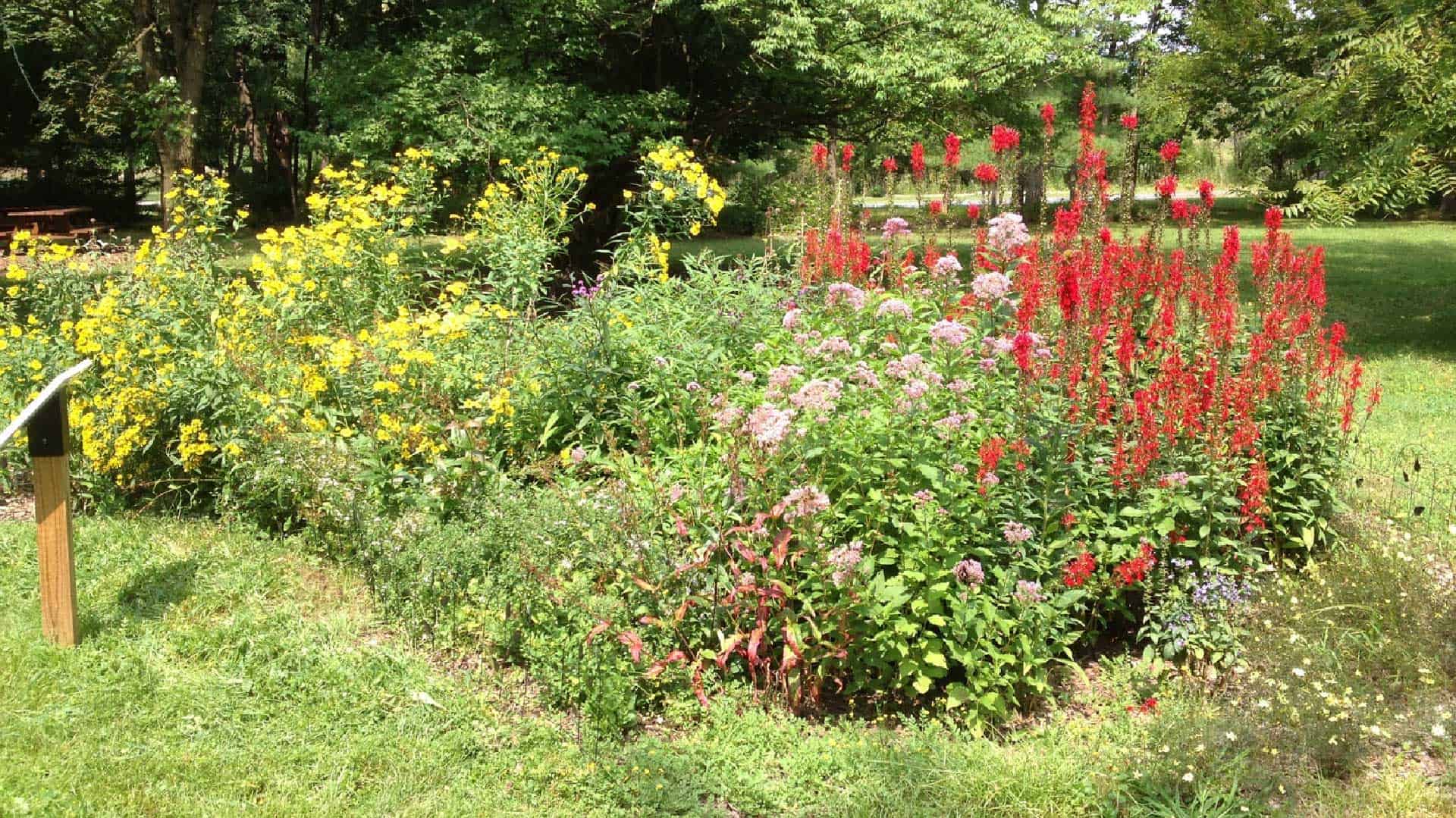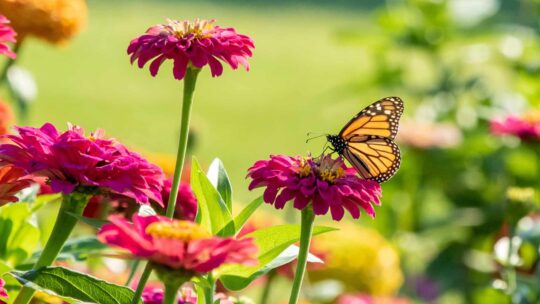
Is managing storm water runoff a challenge currently plaguing your property? If so, creating a rain garden—also known as a bioretention cell—will provide a low-maintenance landscaping solution that can really help. Rain gardens are a common tool landscape designers use on both residential and commercial properties. In addition to serving their primary purpose, they’re aesthetically pleasing, and can be installed in a variety of sizes and designs. (Photo Courtesy – The Watershed Institute)
Pro bass angler and environmental scientist Grae Buck explains what a rain garden consists of, how to create one, and what to be mindful of if you’re considering doing so.
What is a Rain Garden?
A rain garden’s primary purpose is to help reduce runoff and promote groundwater recharge. Through infiltration, or the soaking of water, the runoff is filtered by the soil and plants. This helps remove pollutants such as oil, road salts, heavy metals, sediment, and nutrients from fertilizers, herbicides, and pesticides. These specialized gardens are are actually depressions in the land, created specifically to capture and treat storm water runoff while providing a beautiful, low-maintenance garden. They benefit wildlife and pollinators equally—primarily through the blooming, native plants they help hydrate.
Rain Garden Design Tips
Since rain gardens are constructed to manage storm water, Grae emphasizes the importance of designing them to perform properly. This begins with locating and sizing your rain garden appropriately based on site conditions. While it may seem like common sense, your garden needs to be located in the specific area of your property it’s intended to receive and infiltrate water. This is easy enough to do; simply evaluate your backyard while it’s raining to determine where the water’s flowing and pooling.
Once you’ve done so, locate your rain garden at least 25 feet away from septic systems and house foundations to prevent moisture conveyance. Avoid areas of ponding, as this indicates poor infiltration. When a rain garden collects water, it also needs to distribute it back into the earth—which requires compatible soil. Areas that are wet to begin with aren’t suitable without first excavating your existing soil. You’ll also want to locate your rain garden away from trees, as the increased water could harm their root systems.
Rain Garden Sizing
The amount of water entering your garden is a critical design consideration, as your garden needs to be appropriately sized to handle the job. An engineer can assist with sizing and designing the garden to account for water sources like surface runoff (such as a sloping yard or from a driveway or roadway), roof gutters and downspouts, curb cuts/sidewalk runoff, pipes or swales.
The velocity, or speed, of water entering the garden is also an important consideration. If it’s too strong, the water could blow out the garden’s vegetation, mulch, and soil—or even its structural berm. High-velocity water inputs, such as concentrated pipe flows, usually aren’t ideal for a backyard rain garden. Consider using river rocks to prevent soil erosion where water flows into garden areas. Be mindful that your grade will affect velocity. A dry river bed is an aesthetically pleasing way to use river rock.
While rain gardens are designed to infiltrate water and reduce runoff, every garden should include an overflow, or spillway, area to handle high-volume rain. This can be constructed utilizing a low area in the garden’s down-sloping berm, an outflow pipe, or an engineered riser structure designed to maintain a specified water level in the rain garden, Grae says.
Soil Considerations
When designing a rain garden, you should take your soil type and infiltration capacity into consideration. Infiltration testing can be helpful, and is another reason to consult an engineer. (There are simple methods to test infiltration yourself, as well—see the links at the end of this article!) If your soil isn’t highly permeable (i.e., in areas with high clay content), Grae recommends excavating down several feet and replacing the soil with an improved soil mixture containing a higher sand and organic content.
Your rain garden’s soil medium is arguably the most important design feature consideration. Without porous soil, the water won’t infiltrate sufficiently. This can lead to ponding conditions plants won’t be able to grow in. A highly-absorbent soil mix should consist of sand, topsoil, and organic material. This specialized mix will promote and increase water infiltration. When constructing the garden, Grae suggests hand digging—not heavy machinery—when possible. This will help avoid soil compaction and promote better water infiltration. However, he says you should compact your rain garden’s side berms to ensure its structural stability.
Finally, it’s always important to locate and mark your underground utilities before digging, which can be done by simply dialing 811.

Plant Selection
Rain garden plant species should be site-specific, native, and adapted to the wet conditions. They should be tolerant of moist conditions and frequent water influxes. Grae recommends planting the most water-tolerant plants in the center—and deepest locations—of your garden. (Photo Courtesy – Perkiomen Watershed Conservancy)
Conversely, the most drought-tolerant species should be planted on the outside of your garden. Trees should be avoided, as their root systems can undermine your rain garden’s structural integrity. Mosquitos aren’t typically a problem in rain gardens that’ve been properly designed and constructed, as the water won’t pond long enough to facilitate larvae growth. If you do encounter prolonged ponding, this could mean the infiltration and soil may not be appropriate. If this is the case, your plants likely will die of root inundation. Plant species selection will vary regionally. Here is a list put together by Penn State Extension that identifies ideal rain garden plants native to the Mid-Atlantic region.
For more information on designing your own rain garden, Grae suggests utilizing the following online resources:
- https://extension.psu.edu/an-introduction-to-rain-gardens
- https://pecpa.org/wp-content/uploads/Water-Resources-Create-Your-Rain-Garden.pdf



